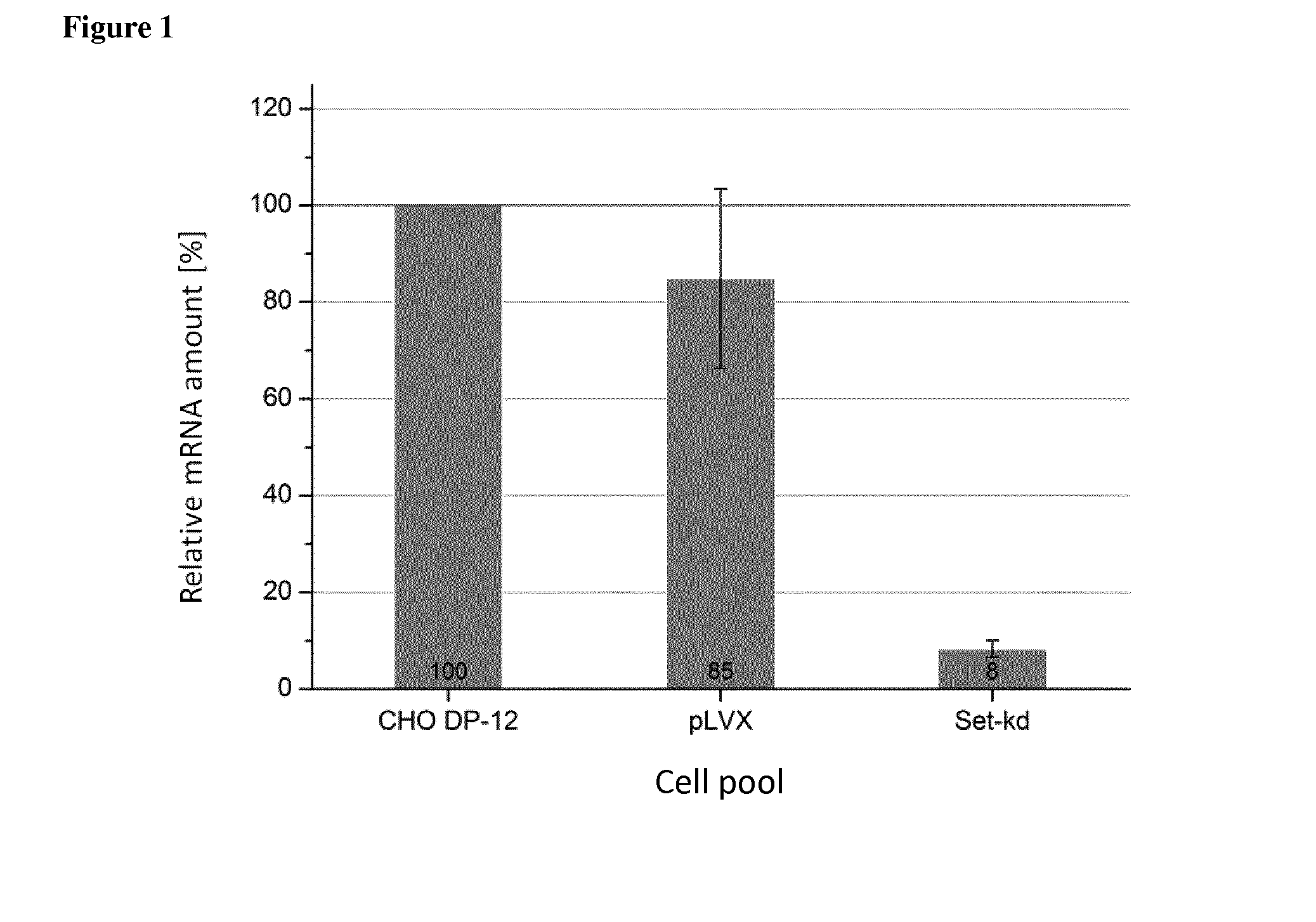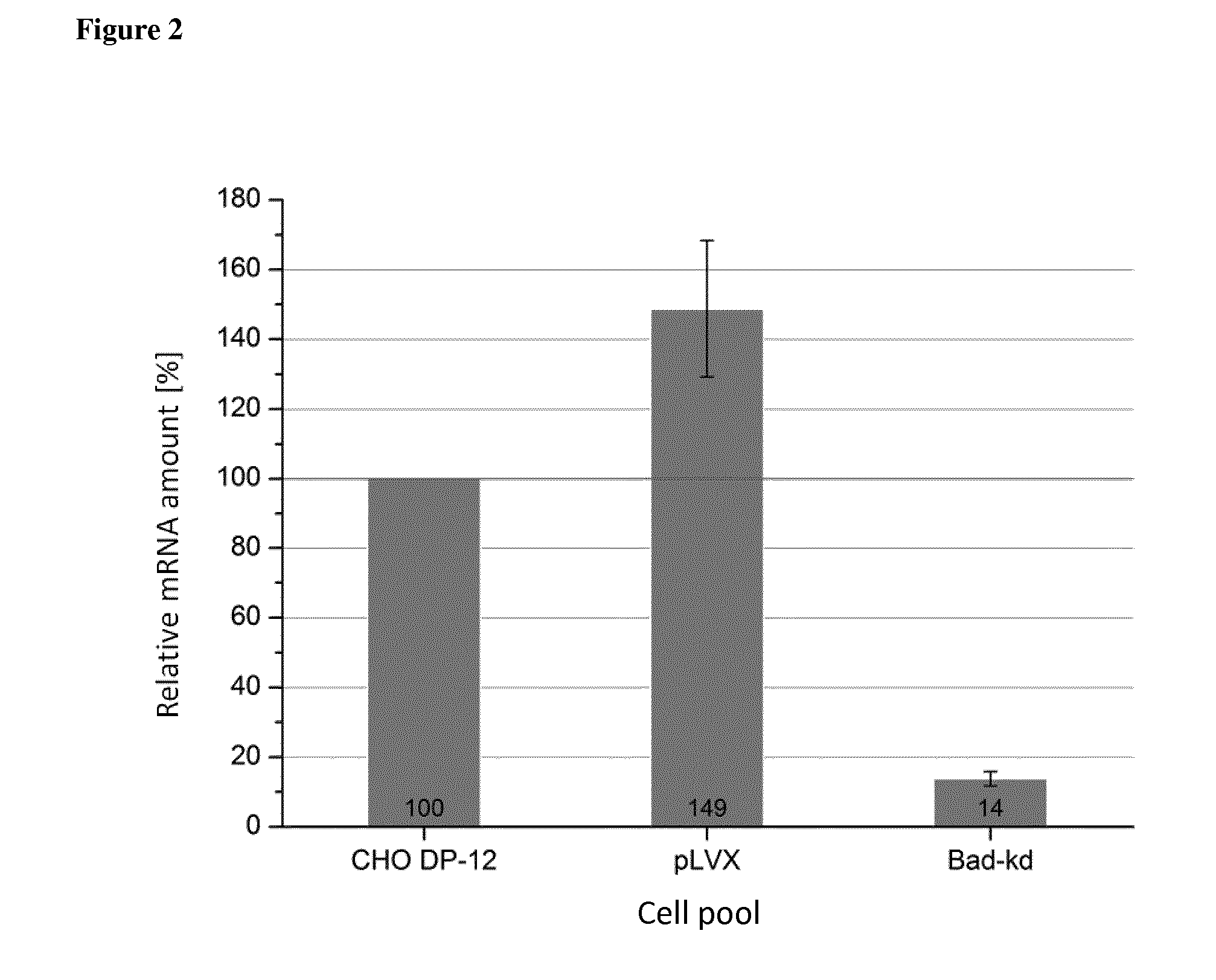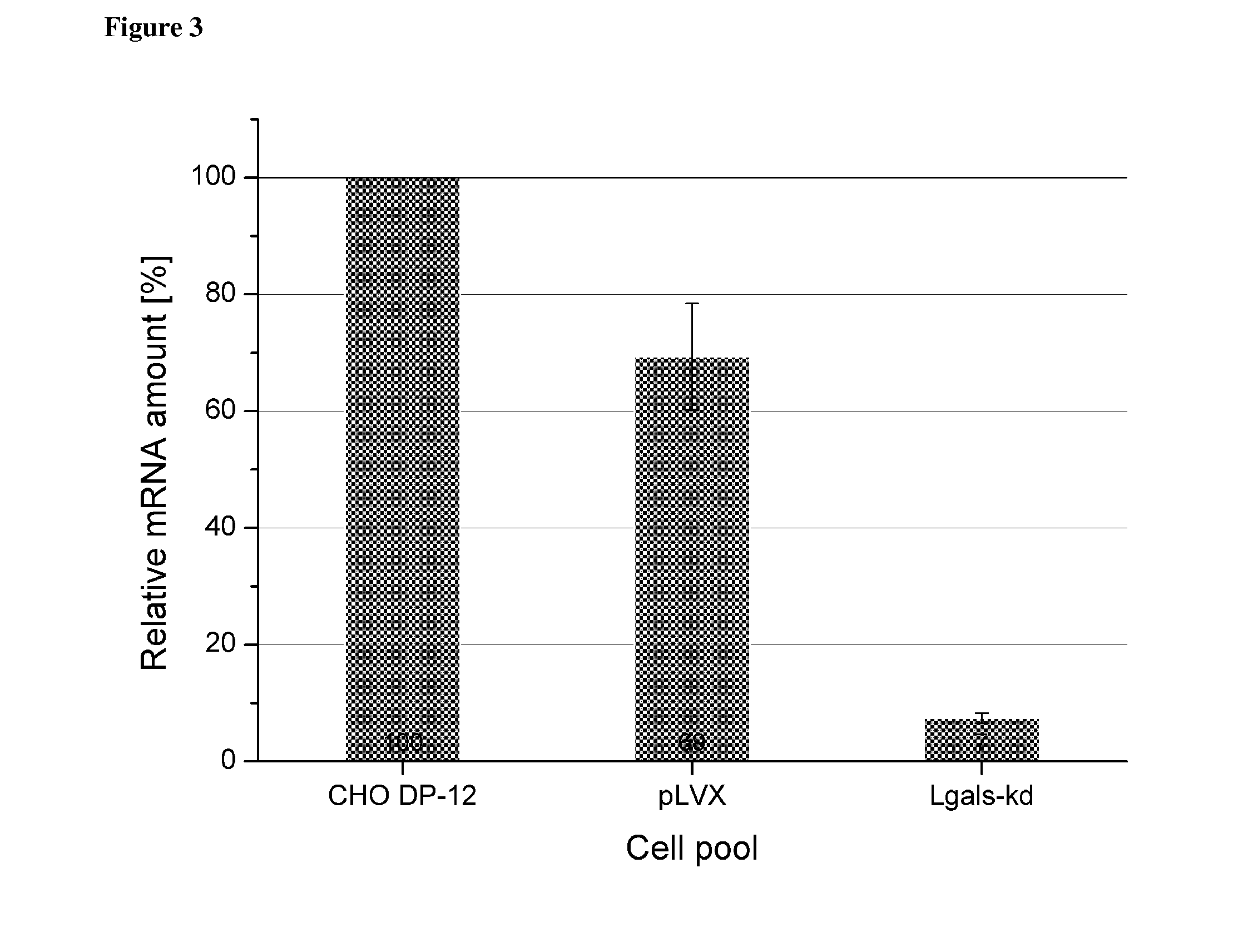Method for recombinant protein production in mammalian cells
a technology of recombinant protein and mammalian cells, which is applied in the field of molecular biology, can solve the problems of complex optimization, blockage of the protein synthesis capacity of the cell with e1a expression rather than expressing recombinant protein, and achieve the effect of increasing the recombinant expression of a protein
- Summary
- Abstract
- Description
- Claims
- Application Information
AI Technical Summary
Benefits of technology
Problems solved by technology
Method used
Image
Examples
example 1
Construction of Stable pLVX-shRNA1 CHO DP-12 Cell Pools
[0077]In order to analyze recombinant protein expression in Chinese Hamster ovary cells (CHO) CHO DP-12 cells were chosen as a model system. The CHO DP-12 cell pool was generated by transfection of CHO cells with the p6G4V11-N35E.choSD.10 vector and subsequent selection on methotrexate (MTX). This expression vector encodes the sequence of the heavy and light chain of the monoclonal murine 6G4.2.5 antibody (U.S. Pat. No. 6,133,426 and EP patent No. 1415998) and allows recombinant expression of the murine antibody in the transfected cells.
[0078]For knockdown experiments the candidate genes Set, Bad and Lgals-1 (Galectin-1) were chosen. siRNA sequences for Set, Bad and Lgals-1 were calculated by either the siRNA Selection Program {Yuan et al. (2004), Nucleic acids research 32, 130-134} or the Ambion siRNA Finder. In order to identify the correct Set nucleic acid sequence that may be used as a template sequence to determine the siRN...
example 2
Persistent knockdown of Set, Bad and Lgals-1 in CHO DP-12 Cells
[0081]The CHO DP-12 cells containing the integrated nucleic acid sequences of the control vector or Set, Bad and Lgals-1 shRNA sequences were cultured in TC42 (TeutoCell AG, Bielefeld, Germany) media supplemented with 5 mM glutamine, 200 nM MTX and 100 ng / 1 IGF. For optimal growth the cells were kept on a shaker using 185 rpm under conditions of 5% CO2 and 80% humidity at 37° C. For fed-batch experiments the starting volume of 20 ml TC42 medium including 5 mM glutamine was inoculated with 5·105 cells / ml. The feed started on day 2 and was increased until day 7. Since day 7 the feed was given in constant amounts (see below Table). As feed TCx2D (TeutoCell AG, Bielefeld, Germany) was used which was supplemented with 20 g / l glucose and 5.5 g / l glutamine. Samples were taken at different timepoints for Cedex measurements and for product analytics.
TABLE 1Cultivation time [d]1234567Feed amount [ml / 20 ml]00.40.81.21.622.4
[0082]To...
example 3
Determination of the Number and Density of Viable CHO DP-12 Cells, pLVX Cells, Set-kd Cells, Bad-kd Cells and Lgals-1-kd Cells
[0087]Set-kd, Bad-kd and Lgals-1-kd CHO DP-12 cells were cultured under fed-batch conditions as described in Example 2. To determine the number and density of viable cells samples of each cell pool were analyzed with the cell density examination system Cedex (Roche Innovatis, Mannheim, Germany). Samples of the cells were mixed with trypan blue and measured by Cedex. Trypan blue can enter dead cell which have damaged cell membranes to stain these cells dark blue {Tennant, J. R. (1964) Transplantation, 2, 685-694}. The Cedex software can recognize the stained cells on pictures taken with a CCD camera.
[0088]Until day 0.7 all cells, namely the CHO DP-12 cells, the pLVX cell pool, the Set-kd cell pool, the Bad-kd cell pool and the Lgals-1-kd cell pool showed identical growth (FIG. 4). At this time point the feed started. After one more day (day 1.7) the densities ...
PUM
| Property | Measurement | Unit |
|---|---|---|
| temperature | aaaaa | aaaaa |
| temperature | aaaaa | aaaaa |
| humidity | aaaaa | aaaaa |
Abstract
Description
Claims
Application Information
 Login to View More
Login to View More - R&D
- Intellectual Property
- Life Sciences
- Materials
- Tech Scout
- Unparalleled Data Quality
- Higher Quality Content
- 60% Fewer Hallucinations
Browse by: Latest US Patents, China's latest patents, Technical Efficacy Thesaurus, Application Domain, Technology Topic, Popular Technical Reports.
© 2025 PatSnap. All rights reserved.Legal|Privacy policy|Modern Slavery Act Transparency Statement|Sitemap|About US| Contact US: help@patsnap.com



